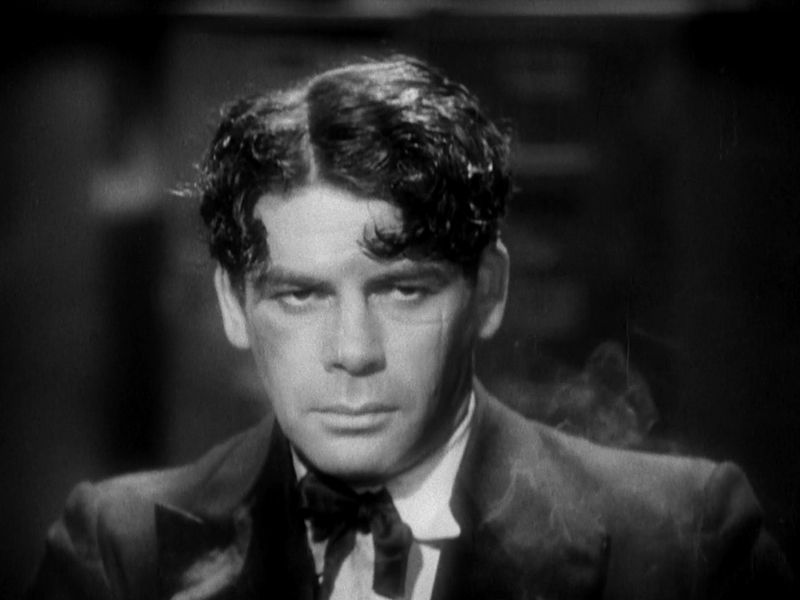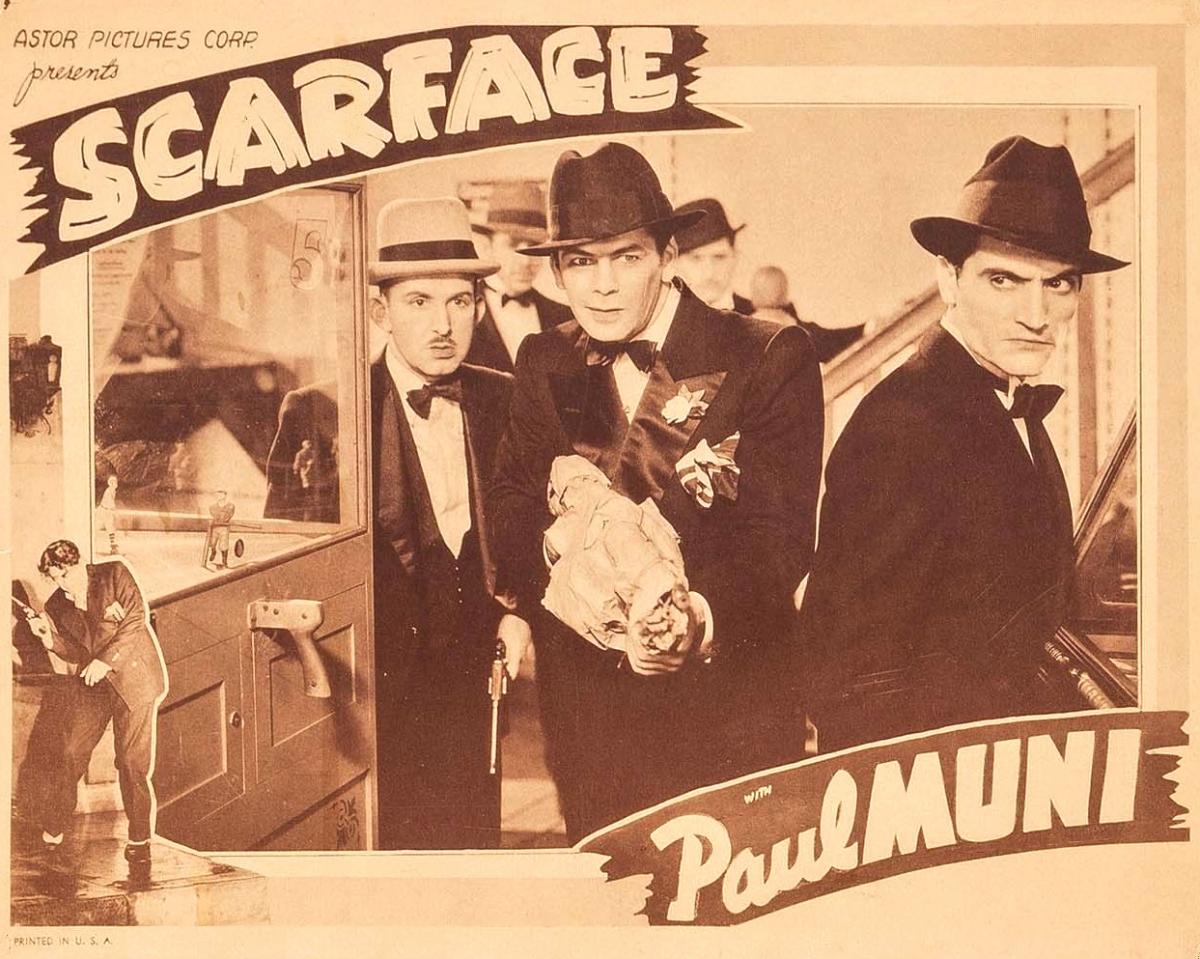
Chicago during Prohibition. The story of Tony Camonte in his rise to become a feared gangster and his eventual death. Allegedly based on the life of Al Capone.
Joseph McBride: Did you have any contact with Al Capone while making the picture?
Howard Hawks: While we were making it, five or six of them came out and said, “The boss wants us to see the picture.” And I said, “You go and tell him when it comes out, he can pay a dollar and buy a ticket. You don’t scare me. Why the hell don’t you come out and just ask to see it?” They reported to Capone that it was just great, and they invited me to Chicago to see him. They met me at the train, and they were late. One of the fellows said, “There was a killing last night and we had to go to the funeral.” I said, “Do I have to ride with you if there was a killing last night?” They said I could ride in a different car. But when we went into a cafe, they would sit with their backs to the wall, and I had my back to the door. We had some damn good-looking girls with us, a bit brassy but very pretty. When I saw Capone, we had tea, and he was dressed in a morning coat, striped trou- sers, a carnation, being a very nice man, saying how much he liked the picture. I was with him two, three hours. Then he asked me to come again, and I stopped by there. But there was a shooting in Chicago, so they said that he couldn’t come because he was hiding out in Atlantic City or something. Then he came to see me when I was working in Hollywood, and the cops came and arrested him right on the set.
So he did see Scarface?
Five or six times. He had his own print of it. He thought it was great. He’d say, “Jesus Christ, you guys got a lot of stuff in that picture! How’d you know about that?” I said, “Look—you know how somebody can’t testify if he’s a lawyer? Well, I’m a lawyer.” And he laughed. He didn’t give a damn. Another famous gangster brought two very lovely daughters out to watch the movie and introduced himself to me. He said, “Where’d you get that stuff in that killing?” I asked him, “Why? Are you mad?” He said, “No, I’m just curious.” I told him, and he laughed, and he said, “That’s the way we did the shooting. Why hasn’t the picture played in Chicago?” I said, “They won’t let me.” He said, “Do you want it to play?” I said yeah. And he said, “Can I use your phone a minute?” When he finished he said, “You can play it any time you want.”
Joseph McBride in conversation with Howard Hawks1
« Les films de cette époque, que ce soit à Berlin ou à Hollywood, sont raffinés, remplis de recherches sonores, profondément réalistes, intenses de vie et, aux États-Unis, cette période est marquée par la prédominance du film de gangsters dont le chef-d’œuvre est Scarface. »
Henri Langlois
“Scarface (1932) is a passionate, strong, archaic photographic miracle: the rise and fall of an ignorant, blustery, pathetically childish punk (Paul Muni) in an avalanche of rich, dark-dark images. The people, Italian gangsters and their tough, wise-cracking girls, are quite beautiful, as varied and shapely as those who parade through Piero's religious paintings. Few movies are better at nail- ing down singularity in a body or face, the effect of a strong outline cutting out impossibly singular shapes. Boris Karloff : long stove- pipe legs, large-boned and gaunt, an obsessive, wild face; Ann Dvorak: striking out blindly with the thinnest, sharpest elbows, shoving aside anyone who tries to keep her from the sex and excite- ment of a dance hall. Besides the sulphurous, extreme lighting and so many feverish, doomed types, like Osgood Perkins as Johnny Lovo, top hood on the South Side until his greedier right-hand man Tony Camonte takes over, the image seems unique because of its moody energy: it is a movie of quick-moving actions, inner tensions, and more angularity per inch of screen than any street film in history.”
Manny Farber2
“Despite a hypocritical foreword demanding public indignation for the entertaining spectacle which was to follow, and an obligatory scene in which a group of reformers stare at the audience and suggest a vague form of lynch-law, Scarface is presented from the point of view of its gangster protagonist. His villainy is never traced back to slum or immigrant origins. He first materializes as a moving shadow slowly tracking towards a victim in a phone booth, and then and there one perceives that Hawks is working in the shadow of Murnau, taking the German master's fluid camera style beyond the sound barrier of the restrictive microphone.
The contrasting influences of Murnau and Eisenstein on modern cinema are still to be fully determined, but it is interesting that the early sound films of Hawks and von Sternberg look more technically advanced today than the montage classics of Milestone and Mamoulian. Yet Hawks, like Ford after The Informer, was to gradually move away from expressionism toward a cleaner American style which would resist the stylistic blandishments reintroduced brilliantly in Citizen Kane.”
Andrew Sarris3
“What other man of genius, even if he were more obsessed with continuity, could be more passionately concerned with the consequences of men's actions, or with these actions' relationship to each other? The way they influence, repel, or attract one another makes up a unified and coherent world, a Newtonian universe whose ruling principles are the universal law of gravity and a deep conviction of the gravity of existence. Human actions are weighed and measured by a master director preoccupied with man’s responsibilities.
The measure of Hawks’s films is intelligence, but a pragmatic intelligence, applied directly to the physical world, an intelligence which takes its efficacity from the precise viewpoint of a profession or from some form of human activity at grips with the universe and anxious for conquest.”
Jacques Rivette4

- 1Joseph McBride, Hawks on Hawks (Kentucky: University Press of Kentucky, 2013).
- 2Manny Farber, “Howard Hawks,” Artforum, April 1969.
- 3Andrew Sarris, “The World of Howard Hawks,” Films and Filming, July and August 1962.
- 4Jacques Rivette, “The Genius of Howard Hawks,” in Focus on Howard Hawks (ed. Joseph McBride) (Englewood Cliffs: Prentice-Hall, Inc., 1972). Published originally as “Genie de Howard Hawks” in Cahiers du Cinéma, May 1953.

